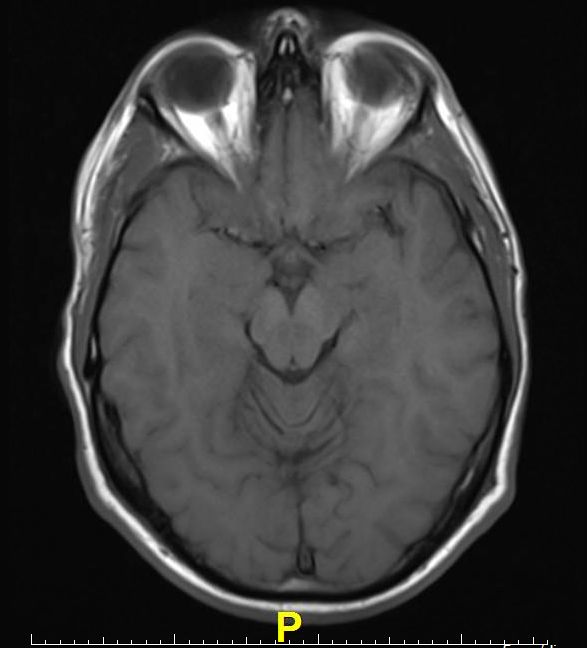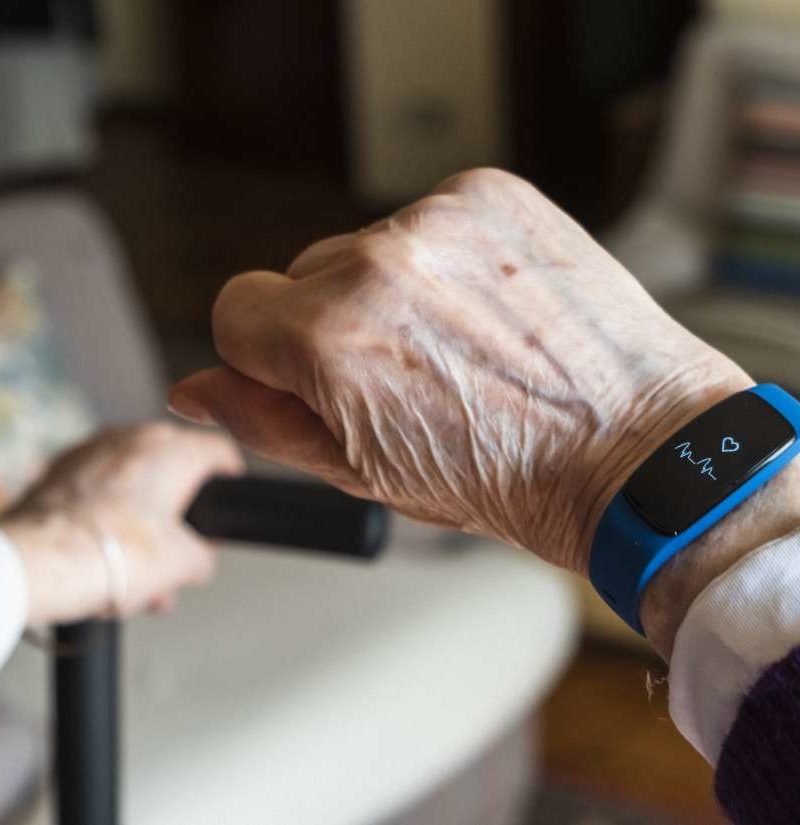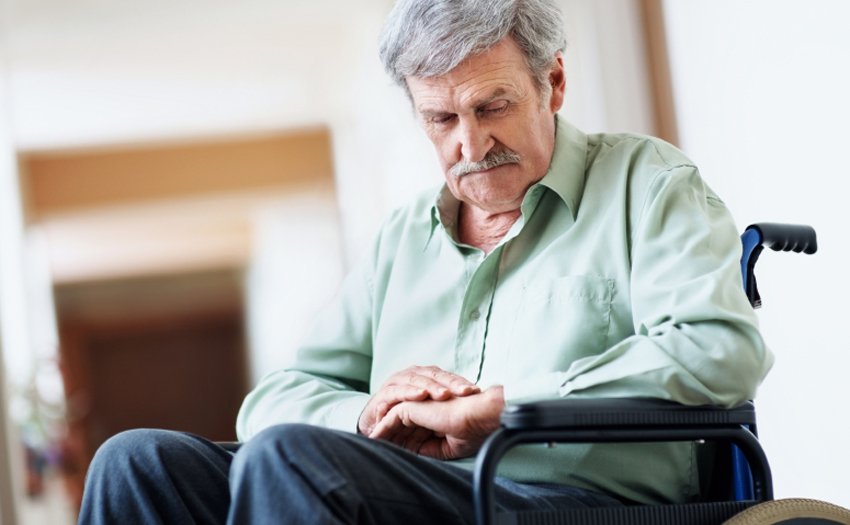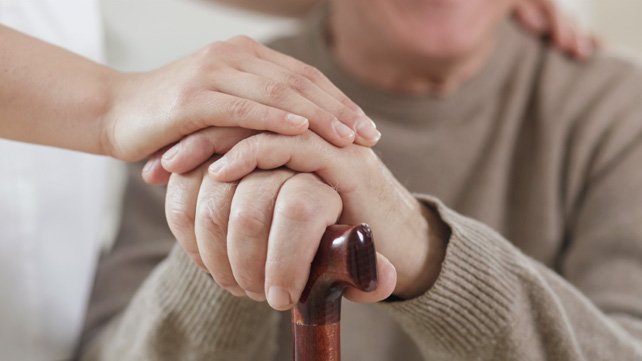Ask When They Last Saw Their Neurologist
Please remind them of the relative value of seeing their neurologist every six months. Although the progression of Parkinsons may be slight or subtle, their healthcare provider is usually the constancy-of-care. The movement disorder physician can advise therapy and guide the treatment plan for the person-with-Parkinsons.
Simplifying Activities Of Daily Living For Parkinsons Patients
Many aspects of daily life that we take for granted become increasingly difficult for someone who is living with Parkinsons. Movement symptoms like weakness, tremor, rigidity, balance problems and bradykinesia become especially pronounced in the middle and later stages of the disease. Medications used to treat PD, such as carbidopa-levodopa, dopamine agonists, MAO B inhibitors and anticholinergics, can also have bothersome side effects like dyskinesia , lightheadedness, drowsiness, hallucinations and confusion that interfere with daily routines. Fortunately, there are assistive devices and adaptations that can help patients maintain their quality of life and make caring for someone with Parkinsons easier for family caregivers.
Challenges You As A Caregiver Are Likely To Face
There are challenges that a person with Parkinson’s disease confronts. First, the disease can vary from day to day. There will be times when they can function almost normally and then other times when they will be very dependent. This is a natural part of the disease. But it can make a caregiver feel that the person is being unnecessarily demanding or manipulative. Keep in mind that Parkinson’s is unpredictable and each day can pose new challenges for you and your loved one.
Also, keep in mind that Parkinson’s is a progressive disorder. While medications and surgery can provide significant relief of symptoms, they do not stop the progression of the disease.
Depression is also very much a part of the disease. It is important to recognize the signs and symptoms of depression so you can help your loved one seek treatment promptly. And, if you are feeling depressed and having trouble coping, it’s just as important to get care for yourself.
Learning How To Manage Daily Living With Parkinsons
Once you are diagnosed with PD, your focus should be on improving your symptoms and maintaining an active and positive lifestyle.
Although there is currently no cure for PD, it is possible to successfully manage symptoms through healthy choices, medications, and, in select cases, medical procedures.
If youre new to Parkinsons disease and would like a good overview to help you better understand the disease, please view our Parkinsons Disease: The Essentials presentation. Its a great place to get started with reliable and concise information.
- Finding local resources and support groups.
- Find upcoming classes and webinars on our Virtual Events Calendar
What Diseases And Conditions Resemble Parkinsons Disease

PD is the most common form of parkinsonism, in which disorders of other causes produce features and symptoms that closely resemble Parkinsons disease. Many disorders can cause symptoms similar to those of PD, including:
Several diseases, including MSA, CBD, and PSP, are sometimes referred to as Parkinsons-plus diseases because they have the symptoms of PD plus additional features.
In very rare cases, parkinsonian symptoms may appear in people before the age of 20. This condition is called juvenile parkinsonism. It often begins with dystonia and bradykinesia, and the symptoms often improve with levodopa medication.
Central Nervous System Development
REM sleep may be especially important for brain development in infants. Some indicates that this sleep stage is responsible for the neural stimulation necessary to develop mature neural connections.
These findings may help explain why infants require higher levels of REM sleep each night, with the number of minutes of REM sleep falling as people age.
Squatty Potty The Original Bathroom Toilet Stool Slim Teak
Constipation is one of the common non-movement symptoms of Parkinsons disease, which is why many with the condition could benefit from a toilet stool. The Squatty Potty Slim Teak lifts your feet while sitting on the toilet to mimic a natural squat. While the act of pooping is anything but glamorous, the Squatty Potty has a sleek design that will add to any bathroom decor. Its also easy to clean and tuck away.
Weighted utensils like this set from the BunMo Store can make it easier for those with Parkinson’s to keep their food on their utensils and make its path to the mouth much smoother. This stainless steel set weighs a minimum of seven ounces per piece, while still maintaining a standard silverware size and shape.
Assembling Your Care Team
Assembling a team that will provide you with physical and emotional support and adapt to your needs over time is one of the best ways to remain healthy. Parkinsons disease is complex and requires an interdisciplinary approach to care. The care team may include, but is not limited to:
- Movement disorder specialist
- Rehabilitation specialists including physical, occupational, and speech therapists
- Nurse
The Complete Mediterranean Cookbook
Most health conditions come with a few lifestyle changes. For Parkinsons, changing your diet is highly recommended. Dr. Nwabuobi advises patients to incorporate lots of vegetables, high fiber, nuts, legumes, and whole grains into their diet. Due to these elements, a Mediterranean diet is a good model for how to start. The Complete Mediterranean Cookbook comes with over 500 recipes that bring the best of Morocco, Egypt, Turkey, Lebanon, Greece, and more to your kitchen. Each recipe puts a new twist on the traditional Mediterranean diet and makes meals easy to cook, which is perfect for weeknight dining when energy is already low.
How To Help Someone With Parkinsons Stay Mobile
A very common symptom of Parkinsons is freezing. This happens when a person is walking or moving and suddenly experiences extreme rigidity and an almost complete loss of movement as if their feet are glued to the floor. When this happens, prompting can help your loved one become unstuck. Ask them to pretend that they are stepping over an imaginary line or object on the floor, or even encourage them to rock very slowly and gently from side to side to help them get moving again. If freezing is a common occurrence for your loved one, consider purchasing a specialty mobility device like a walker or rollator that is equipped with a laser pointer. When freezing occurs, they can simply press a button to project a laser line on the floor and use it as a visual cue to help them continue moving.
Massage therapy for Parkinsons patients can alleviate stress and relieve spasms, tremors, rigidity and muscle cramps. Heating pads also soothe aching muscles, and menthol pain relieving gel does wonders for stiff joints, but never use both together.
Exercising can be difficult at first but very beneficial for those living with PD. Encourage your loved one to do hand exercises like squeezing a rubber ball for short periods of time throughout the day to help reduce tremors and to keep hands and fingers strong and flexible. Even short daily walks and a mild fitness routine can keep muscles, tendons and joints strong for as long as possible.
How To Start Exercising If Youre Living With Parkinsons
Safety is key. The first thing you need to do is talk with your neurologist and primary care doctor to make sure that the exercise regimen that you embark upon is safe for you.
Next, ask for a referral for physical therapy. A physical therapist will be able to figure out what movement challenges you may have and design a program to help you improve. There are certain physical therapists with additional training in Parkinsons. Your physical therapist will work with you for your allotted sessions, and then can help you plan your ongoing exercise regimen that is tailored to you. You can contact the APDA National Rehabilitation Resource Center for Parkinsons Disease for help finding resources in your area.
Additionally, physical therapy can help counteract the tendency for people with PD to reduce the size of their movements. The Lee Silverman Voice Technique has designed a program called LSVT-BIG which trains participants to make big movements. You can search for an LSVT-trained professional near you.
Anyone starting out on an exercise program could benefit from APDAs which includes clear photos with simple instructions that are easy to follow, with exercises that address all levels of fitness.
Home Safety Considerations For Parkinsons Disease
Mobility problems are common symptoms of Parkinsons disease, therefore maximizing the safety and accessibility of a patients home is a top priority. Since seniors with PD often use mobility aids like canes, walkers, rollators or wheelchairs, wide, clear pathways in rooms and hallways are important. The following home elements can make it difficult for a person with limited mobility to get around their home safely.
What Genes Are Linked To Parkinsons Disease

Several genes have been definitively linked to PD:
- SNCA. This gene, which makes the protein alpha-synuclein, was the first gene identified to be associated with Parkinsons. Research findings by the National Institutes of Health and other institutions prompted studies of the role of alpha-synuclein in PD, which led to the discovery that Lewy bodies seen in all cases of PD contain clumps of alpha-synuclein. This discovery revealed the link between hereditary and sporadic forms of the disease.
- LRRK2. Mutations in LRRK2 were originally identified in several English and Basque families as a cause of a late-onset PD. Subsequent studies have identified mutations of this gene in other families with PD as well as in a small percentage of people with apparently sporadic PD. LRRK2 mutations are a major cause of PD in North Africa and the Middle East.
- DJ-1. This gene normally helps regulate gene activity and protect cells from oxidative stress and can cause rare, early forms of PD.
- PRKN . The parkin gene is translated into a protein that normally helps cells break down and recycle proteins.
- PINK1. PINK1 codes for a protein active in mitochondria. Mutations in this gene appear to increase susceptibility to cellular stress. PINK1 has been linked to early forms of PD.
- GBA . Mutations in GBA cause Gaucher disease , but different changes in this gene are associated with an increased risk for Parkinsons disease as well.
Tips For Daily Living
If you are already living with Parkinsons disease, here are some tips to manage it:
- Exercise your brain. Read, work on crossword puzzle, do Sudoku, or engage in other activities that use your brain.
- Get moving. If you feel comfortable walking, swimming, or riding an exercise bike, go for itand try to do it on a regular basis.
- Try tai chi. We think of tai chi as a mind-body exercise, and it is, but it also has roots as a martial art in China. A 2012 study found that practicing tai chi helped people with moderate Parkinsons disease maintain stability and balance. And a 2014 study found that tai chi can help people reduce their risk of falling. It incorporates a flowing series of coordinated movements to help you maintain flexibility, strength and balance, and it can be easily adapted to meet your abilities.
- Practice yoga. You dont have to perform headstands or other physically challenging poses to get significant benefits from practicing yoga. You can improve your balance, mobility, flexibility, and strength with a form thats adapted for you.
- Find a support group. Whether you prefer an online support group or a group that meets in person, a support group can be an invaluable resource for helping you live with Parkinsons disease.
Eight Causes Of Parkinsons Disease
Many scientists and doctors dream of developing a cure for Parkinsons disease. However, the reality is that Parkinsons disease is caused by multiple factors and therefore is unlikely to respond to a single therapy.
we can make more progress and improve quality of life by addressing the many underlying causes of Parkinsons disease
How To Help Someone With Parkinsons Disease Thrive
The symptoms of Parkinsons can have a significant impact on physical, mental and social abilities, but family caregivers can make life much easier for seniors who are living with this condition. By learning about PD and planning ahead, a caregiver may be able to anticipate changing needs and abilities and resolve issues before they negatively affect a loved one. Taking proactive steps to ensure a PD patients safety, extend their independence and preserve their functional abilities will help them remain in their own home longer and have a beneficial impact on their overall quality of life.
Tips To Slow Or Stop Progression
Some suggest that you may be able to delay some of the effects of Parkinsons disease through regular physical activity. Ideally this would include a combination of exercise that includes:
- aerobic activity
- balance training
- functional activities
The NINDS has funded a number of studies to learn more about the impact of exercise, including whether exercise might help people delay the need for medication.
Stretching To Loosen Stiff Muscles Of Parkinson’s
The following stretching and flexibility exercises can help to relieve stiff muscles, improve flexibility, and make everyday tasks easier:
Coping With Cognitive Changes And Parkinsons
Cognitive decline and behavioral changes often occur in the middle and late stages of Parkinsons disease. Caregivers must be particularly understanding and flexible when loved ones begin experiencing changes in memory and thinking. A PD patient may have trouble with planning, problem-solving, multitasking and spatial reasoning, which can make daily activities frustrating, impossible or even dangerous. Its important to encourage independence but remain focused on ensuring their safety.
Changes in a loved ones brain may also affect their ability to communicate. Approximately 89 percent of people diagnosed with Parkinsons disease also have some type of progressive motor speech disorder. A PD patients voice may become softer or hoarser, they may have difficulty finding words, or their speech may become slurred. Working with a speech therapist can help an elder maintain their communication skills and confidence in social settings. Continue to encourage open communication, minimize distractions, and allow more time for responses as well as verbalized requests.
Read:Parkinsons Disease Top Tips: Communicating in Spite of Speech and Voice Disorders
Incidence Of Parkinsons Disease
Its estimated that approximately four people per 1,000 in Australia have Parkinsons disease, with the incidence increasing to one in 100 over the age of 60. In Australia, there are approximately 80,000 people living with Parkinsons disease, with one in five of these people being diagnosed before the age of 50. In Victoria, more than 2,225 people are newly diagnosed with Parkinsons every year.
The Basic Elements Of Exercising With Parkinsons

There are four core elements of exercise that are important for people with PD:
Including all four of these elements in your exercise regimen is ideal .
Aerobic activity or high-intensity exercise may be particularly important for Parkinsons and general health
High-intensity exercise has been formally studied in PD with impressive results. The Study in Parkinson Disease of Exercise Phase 2 enrolled 128 people with early PD, who were not yet on dopaminergic medication into three groups:
- a high-intensity treadmill exercise group, in which people exercised at 80-85% of their maximum heart rate
- a moderate-intensity treadmill exercise group, in which people exercised at 60-65% of their maximum heart rate
- a wait-list control group
After six months, the high-intensity group had essentially no change in their motor scores, whereas the control group had a three-point worsening of their motor scores.
Currently, the SPARX3 trial is enrolling participants and underway. This trial is similar to SPARX2, but with a goal of studying many more participants.
Forced exercise
Cognitive challenges in exercise
Treating Parkinsons With Complementary Medicine
Complementary medicine incorporates many different practices that can be used alongside conventional medicine to try to ease PD symptoms. There is typically not as much rigorous data to support the use of complementary medicine techniques, as compared to conventional medicine, but many patients find them helpful. These include yoga and massage.
Make Your Loved One’s Life A Little Easier With These Thoughtful Gifts
Our editors independently research, test, and recommend the bestproducts; youcan learn more about ourreview process here.We may receive commissions on purchases made from our chosen links.
Parkinsons disease is a progressive disorder that develops as a result of losing dopamine-producing neurons. These cells are mainly located in the part of the brain called substantia nigra pars compacta, explains movement disorders neurologist and Parkinsons expert Lynda Nwabuobi, MD. With degeneration of these cells and hence, depletion of dopamine, Parkinsons disease includes symptoms such as tremor, bradykinesia , and rigidity manifest.
This condition can make it more difficult to complete everyday tasks, like moving about the house, putting on clothes, and even speaking. It can be challenging to manage Parkinsons, especially on your own, so having friends and family there to support really can make the difference. Dr. Nwabuobi says its important to remember that Parkinsons is not fatal and many people live full enriched lives with the condition.
One of the ways to help someone in your life dealing with Parkinsons this holiday season is to give them a present that not only makes them smile, but works to make their life more manageable and puts some level of control back in their hands. Here are some gift ideas theyll be sure to love and appreciate.
Figuring Out Causes Of Fatigue
The first step in easing the fatigue associated with Parkinsons disease is to rule out other causes of tiredness, says Liana Rosenthal, M.D., assistant professor of neurology at the Johns Hopkins University School of Medicine and director of clinical core at the Morris K. Udall Center Parkinsons Disease Research Center of Excellence. We evaluate patients to see if there are other things contributing to the fatigue besides their disease, she says.
Sometimes patients may be referred to a sleep specialist for an evaluation. That can help identify causes of tiredness, like sleep apnea. Rosenthal says: Our aim is to first treat any sleep issues, like insomnia, sleep apnea or other causes of poor sleep. Once we treat and address those issues, we can see if fatigue still persists.
Diagnosis And Management Of Parkinsons Disease
There are no diagnostic tests for Parkinsons. X-rays, scans and blood tests may be used to rule out other conditions. For this reason, getting a diagnosis of Parkinsons may take some time.
No two people with Parkinsons disease will have exactly the same symptoms or treatment. Your doctor or neurologist can help you decide which treatments to use.
People can manage their Parkinsons disease symptoms through:
- seeing a Doctor who specialises in Parkinsons
- medication
- multidisciplinary therapy provided for example, by nurses, allied health professionals and counsellors
- deep brain stimulation surgery .
What Kind Of Exercise Can I Do If I Have Trouble Standing Or Walking
Even with advanced Parkinsons symptoms, you can still reap the benefits of some activities. If you have trouble walking or balancing, hold a bar or rail to exercise and stretch. If standing or getting up is tough, exercise and stretch in a chair or bed. Physical exercise performed in a seated position, such as biking on a recumbent bike can allow you to exert yourself in a safe manner.
Facial exercises may help combat difficulties speaking or swallowing:
- Chew your food longer and more vigorously.
- Exaggerate your face and lip movements when you speak.
- Make faces in the mirror.
- Sing or read out loud.
Mental exercises give your brain a workout and can improve memory. For example:
- Name as many animals as you can in 1 minute.
- Play brain games and do puzzles.
- Solve math problems in your head.
You can also add activity in small bits throughout your day:
- Park further away from stores so you walk longer distances.
- Stretch or do leg exercises while watching TV.
- Swing your arms more when you walk, and take long strides.
- Take the stairs instead of the elevator.
How To Prevent Parkinson’s Disease
This article was medically reviewed by Troy A. Miles, MD. Dr. Miles is an Orthopedic Surgeon specializing in Adult Joint Reconstruction in California. He received his MD from the Albert Einstein College of Medicine in 2010, followed by a residency at the Oregon Health & Science University and fellowship at the University of California, Davis. He is a Diplomat of the American Board of Orthopaedic Surgery and is a member of the American Association of Hip and Knee Surgeons, American Orthopaedic Association, American Association of Orthopaedic Surgery, and the North Pacific Orthopaedic Society.There are 23 references cited in this article, which can be found at the bottom of the page. This article has been viewed 32,218 times.
In Summary Reduce Your Stress
The most important thing we can do for our long-term health, both physical and cognitive, is to reduce the stress in our bodies. All stress physical, emotional and chemical causes inflammation and long-term damage throughout the body.
Whether youre seeking Parkinsons prevention techniques or ways to alleviate symptoms, any of the above dietary and lifestyle practices can have long-term health benefits. Drinking green tea, eating organic, local vegetables, and regular aerobic exercise all significantly reduce the long-term cumulative damage done by stress.
Learn more about health services offered at Judson by !
Find Out How Well They Are Sleeping

It is vital to know if they are getting enough sleep every night. Why? Please think of the brain like a sponge filling up with fluid all-day long; during our time to sleep, we squeeze the excess liquid out and restore/refresh our mind. Insomnia is shared from both treatments and as a clinical feature of Parkinsons.
What Types Of Sensors Are Available
There are also multiple methods of collecting the data:
- Data passively captured without a patient having to wear any new sensors for example, capturing typing data by placing software on a patients computer with the patient continuing to interact with the keyboard as he/she normally does. Typing data that is collected can include how long a patient spends touching a key and how long it takes between touching one key and the next.
- Data passively captured by a sensor without the patient having to do any additional tasks the sensor can be placed on the wrist, ankle or trunk. The sensor can also be in the patients cell phone.
- Data actively captured by a sensor the patient wears the sensor and then performs certain tasks beyond what he/she typically does in his/her daily activities. This could include finger tapping, for example. Sometimes the sensors are too complicated or large for the activities to be performed at home, and the patient needs to come to a neurophysiology lab for the data collection.
What Are The Symptoms Of Parkinsons Disease
Symptoms of Parkinsons disease and the rate of decline vary widely from person to person. The most common symptoms include:
Other symptoms include:
- Decreased facial expressions: You may not smile or blink as often as the disease worsens; your face lacks expression.
- Speech/vocal changes: Speech may be quick, become slurred or be soft in tone. You may hesitate before speaking. The pitch of your voice may become unchanged .
- Handwriting changes: You handwriting may become smaller and more difficult to read.
- Depression and anxiety.
- including disrupted sleep, acting out your dreams, and restless leg syndrome.
- Pain, lack of interest , fatigue, change in weight, vision changes.
- Low blood pressure.
